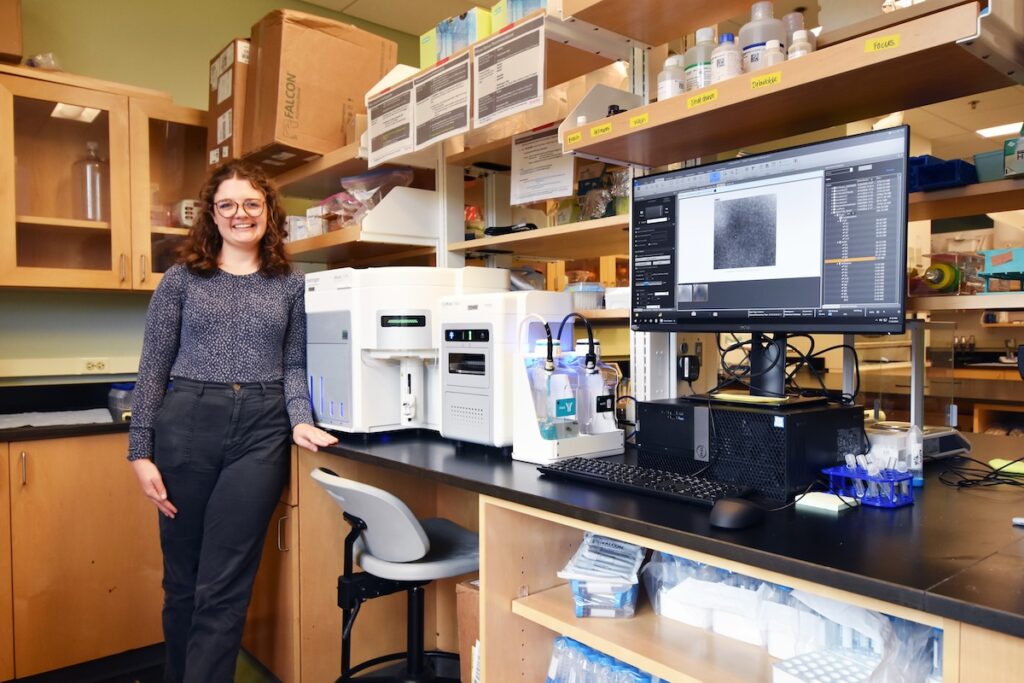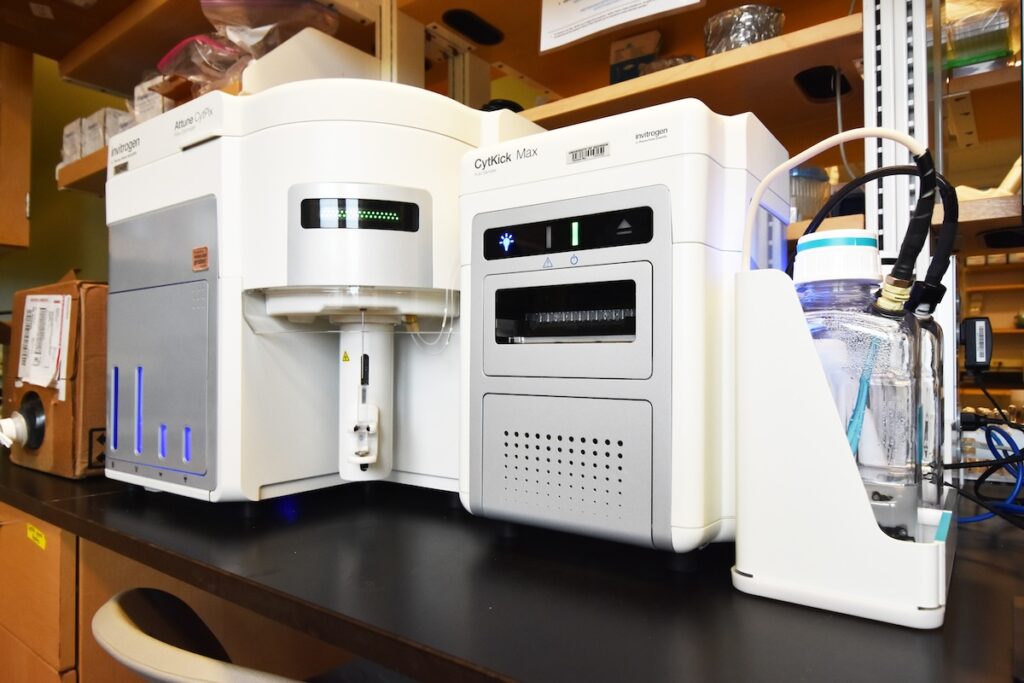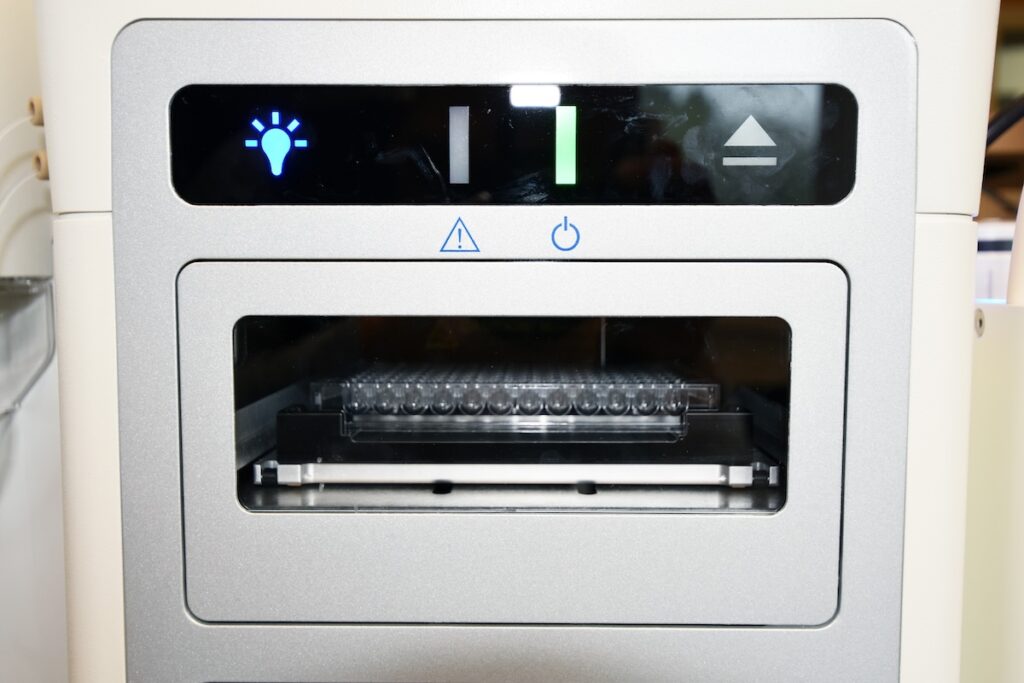
The University of Georgia Skidaway Institute of Oceanography has received and installed a new, advanced flow cytometer with imaging capabilities in the lab of faculty member Natalie Cohen. The machine is currently being used by doctoral student Claire Zwiers Cook to analyze plankton samples from as far away as the middle of the Atlantic Ocean.
The new tool, called the Attune CytPix Flow Cytometer, is unique in that it combines acoustic focusing with a brightfield imaging system, allowing scientists to see clear images of samples, such as microscopic plankton, as they’re passed through the machine, rather than solely receive information about the size, shape and fluorescent features of the samples, as is common in more traditional flow cytometers.
The flow cytometer is capable of capturing and storing images at a rate up to 6,000 images per second. The acoustic focusing feature ensures that images are sharp.

The machine’s advanced imaging capabilities are particularly useful for Zwiers Cook’s research analyzing mixotrophs, which are organisms that can both perform photosynthesis and consume other organisms for energy. After filtering out larger organisms from bulk seawater, Zwiers Cook adds small beads to the samples to determine if the mixotrophic plankton consume the beads.
“Why we really like this instrument is that it also takes pictures,” said Zwiers Cook. “It is really helpful to see pictures, because the beads can get stuck in a sticky matrix outside of the cell and they aren’t actually eaten. In our other flow cytometer that doesn’t take pictures, it is hard to distinguish between the population of cells that just kind of stuck to a bead with those who actually consumed a bead.”
The levels at which mixotrophs in the middle of the ocean, for example, are eating versus photosynthesizing can have significant implications in terms of the way scientists understand the carbon cycle, Zwiers Cook explained. If the mixotrophs are primarily photosynthesizing, that’s them fixing CO2 and producing oxygen. But, if they’re doing more eating, that’s them outputting more CO2 than they’re fixing.
Although the new flow cytometer is currently being used for analyzing microplankton, its capabilities extend much further. Those who are interested in running samples through the machine can get in touch with Zwiers Cook at claire.czc@uga.edu.

About SkIO
The UGA Skidaway Institute of Oceanography (SkIO) is a multidisciplinary research and training institution located on Skidaway Island near Savannah, Georgia. The Institute was founded in 1967 with a mission to conduct research in all fields of oceanography. In 2013, SkIO was merged with the University of Georgia. The campus serves as a gateway to coastal and marine environments for programs throughout the University System. The Institute’s primary goals are to further the understanding of marine and environmental processes, conduct leading-edge research on coastal and marine systems, and train tomorrow’s scientists. For more information, visit www.skio.uga.edu.


